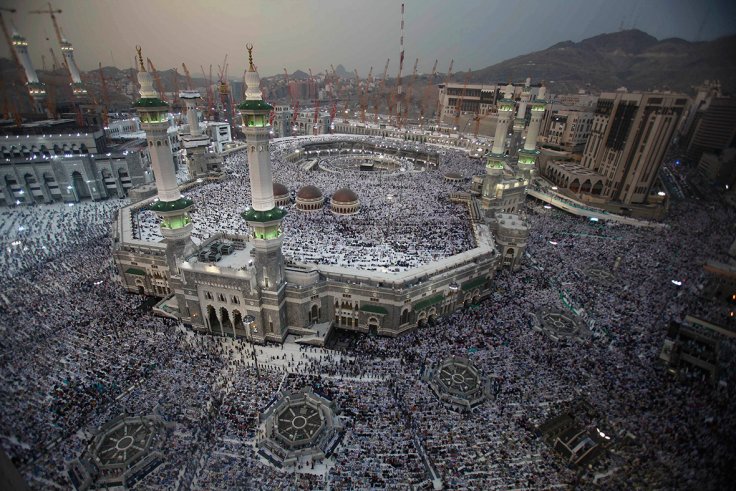At least 717 people were killed, and 863 were injured, in a stampede near Mecca, Saudi Arabia, on Thursday morning.
The deaths — at an intersection in Mina, about six miles east of the city — occurred around 9 a.m. on the first day of Eid al-Adha, one of the holiest holidays in the Muslim calendar, and as millions of Muslims were making their pilgrimage, or hajj, to Mecca.
It appeared to be the deadliest accident duringthe hajj since 1990, when 1,426 pilgrimsperished in a stampede in a tunnel linking Mecca and Mina. And it occurred less than two weeks after a large construction crane toppled and crashed into the Grand Mosque in Mecca, killing at least 111 people and injuring 394 others.
Thursday’s stampede is likely to intensify fears that the kingdom does not have the transportation and public safety infrastructure to channel and protect what is the world’s largest regular human migration.
In a statement, the Saudi health minister, Khalid al-Falih, said the stampede was “possibly caused by the movement of some pilgrims who didn’t follow the guidelines and instructions issued by the responsible authorities.”
But the high death toll is likely to embarrass the Saudi government, which considers itself the leader of the Muslim world and takes great pride in hosting the millions of pilgrims who visit the holy cities of Mecca and Medina each year. One of the titles of the Saudi monarch is “custodian of the two holy mosques,” referring to his personal duty to protect the sites and the pilgrims.
The Saudi civil defense directorate reported the deaths on Twitter and said that two medical centers had been opened in Mina to treat the injured. More than 4,000 emergency workers were sent to the scene, and hundreds of people were taken to four hospitals.
The accident on Thursday, witnesses reported on social media, occurred around the area where pilgrims go to perform a ritual — the Stoning of the Devil, a re-enactment of a story from the Quran involving the Prophet Abraham — that takes place during the hajj.
Cellphones and cameras are prohibited from the main sanctuaries, but cameras can be used in the surrounding areas.
Videos of the aftermath shared on social media showed scores of lifeless bodies in the street, many covered with the simple white garments pilgrims wear during the hajj. One video showed a heap of men lying atop each other, while rescue workers in fluorescent yellow vests worked to separate the dead from the living, and to rescue any survivors.
Mina provides temporary accommodation, with tens of thousands of air-conditioned tents, for many of the more than two million pilgrims who make the hajj to circumnavigate the Kaaba, which sits at the center of the Grand Mosque.
Mina has been the site of multiple deadly accidents over the years.
In 2006, a stampede there claimed more than 360 lives on the eve of the hajj, and a day earlier an eight-story building near the Grand Mosque collapsed, killing at least 73 people.

In 2001, a stampede in Mina killed around 35 people; in 1998, about 180 pilgrims were trampled there after several of them fell off an overpass during the stoning ritual; in 1997, at least 340 pilgrims were killed in a fire in Mina set off by high winds; and in 1994, about 270 were killed in a stampede there.
Irfan al-Alawi, the executive director of the Islamic Heritage Research Foundation and a critic of how the Saudi government has developed the holy cities of Mecca and Medina, said by telephone from Mecca that the disaster was a result of “poor management” by the government, given the number of past disasters.
Madawi al-Rasheed, an anthropologist and visiting professor at the London School of Economics, said: “There is no accountability. It’s shocking that almost every year there is some kind of death toll.”
The Saudi government began a construction boom around Mecca around a decade ago, at the start of the reign of King Abdullah, who died in January.
“The renovation and expansion are done under the pretext of creating more space for Muslim pilgrims, but it masks land grabs and vast amounts of money being made by the princes and by other Saudis,” Professor Rasheed said.
After the crane collapse, the Saudi government punished the Saudi Binladin Group — a construction conglomerate working on the mosque expansion — by denying it future contracts and banning travel for some of its executives.

The expansion has transformed Mecca. Whole neighborhoods — mostly populated by migrant workers from Yemen, Egypt and other countries — are being bulldozed for new roads and hotels. The topography of the city itself is being altered, as hills are leveled to make way for new construction and cranes rise in their place. The most coveted real estate, abutting the grand mosque, is occupied by a cluster of luxury hotels where rooms cost hundreds of dollars a night, even in the off-season.
To ease the crowds, the Saudi authorities have expanded upward, building pedestrian bridges around the holy sites, some of them close to the camp where Thursday’s stampede occurred. A train line linking the cities of Jidda, Mecca and Medina is being planned to ease road congestion but has been hampered by delays.
Even before Thursday’s stampede, this year’s pilgrimage season was marred by mishaps. Last Thursday, about 1,000 pilgrims from Asia had to leave their hotel because of a fire, which injured two Indonesians. This week, about 1,500 pilgrims were evacuated from a hotel in Mecca when a fire broke out on the 11th floor of a 15-story hotel. Four pilgrims from Yemen were hurt.
A vast majority of pilgrims are not from Saudi Arabia and have not been able to exert pressure on the government to improve crowd control or public safety around the hajj. Professor Rasheed said that officials in the kingdom had avoided responsibility in part by citing the Islamic doctrine that anyone who dies during the pilgrimage — one of the five pillars of Islam, and a duty for all able-bodied Muslims with the means to make the trip — goes to heaven.
On Thursday, the Saudi civil defense directorate said on Twitter, “We ask God to grant the martyrs his mercy.”














